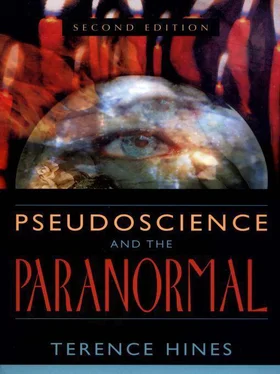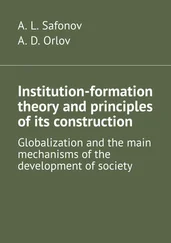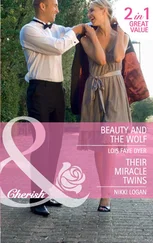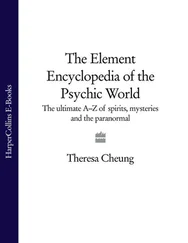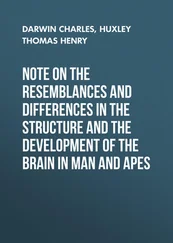Neppe (1983) separately developed a questionnaire test for temporal lobe signs and found that individuals who report alleged paranormal experiences score higher on his questionnaire than do those who report no such experiences. Neppe also suggested that individuals who report having paranormal experiences have higher levels of ELTLA than those who do not have such experiences. Nelson (1970, cited in Neppe 1983) found EEG signs of temporal lobe “instability” in ten out of twelve trance mediums tested. The presence of temporal lobe signs also correlates positively with hypnotic susceptibility (Persinger and De Sano 1986; Ross and Persinger 1987). Along similar lines, hypnotic susceptibility has been shown to be positively correlated with a personality trait termed absorption by Tellegen and Atkinson (1974), who developed a test of this trait. The highly absorptive individual is one who easily blocks out distracting inputs; can “get lost” in a book, film, television show, or fantasy; and can focus attention on a given stimulus, whether the stimulus is external or self-generated. Tellegen and Atkinson suggest that such highly absorptive individuals are more likely to have a “dissociative experience.” It is just this type of experience that can lead to acceptance of the reality of paranormal experiences. Davidson, Schwartz, and Rothman (1976) used an EEG measure of attention and found that subjects who scored high on absorption were better able than others to inhibit brain activity in a brain area related to a distracting stimulus. Calbraith, Cooper, and London (1972) found a similar ability in highly hypnotizable subjects, as did Spiegel, Cutcomb, Ren, and Pribram (1985). The latter authors showed that asking highly hypnotizable subjects to imagine a barrier between their eyes and a light stimulus reduced the neural response to that light. No such effect was found in the less hypnotizable subjects.
What does this welter of correlations and research reports mean? First, it provides considerable support for Persinger’s (1983) hypothesis that mystical and paranormal experiences are caused by subtle abnormalities in the electrical activity of the temporal lobes or underlying neural structures. They also offer a starting point for an explanation of why there are large individual differences in the propensity to have what are interpreted as paranormal experiences. Because of mild electrophysiological abnormalities, some individuals may be less able to distinguish between reality and fantasy due to their greater ability to block out intruding reality when attending to a fantasy. It should not be thought, however, that physiological explanations can account for all acceptance of paranormal experiences as real. Purely psychological factor, such as constructive memory and perception, and the fallacy of personal validation also play a strong role. Their role may be greater in those individuals who are not subject to increased ELTLA. More recent work by Persinger (1993, 1997) has provided additional support for the relationship between the temporal lobes and religious-type transcendent experiences. Persinger (1993; Persinger and Healey 2002) showed that such experiences could be induced by stimulation of the temporal lobe.
One final neurological disorder has been responsible for reports of paranormal events. This is the migraine headache (Beyerstein 1987–88), the third of the diseases whose symptoms were described above. Like the symptoms of epilepsy, the symptoms of migraine vary greatly from individual to individual (Sacks 1985). Migraine is generally caused when blood vessels in the brain spontaneously constrict and then greatly expand (Adams, Victor, and Ropper 1997). The expansion results in the often excruciating pain of the migraine headache. During the constriction phase, blood supply to the brain areas supplied by the constricting vessels is diminished. Often these vessels supply the occipital lobes, where much visual function is centered. The resultant lack of blood causes striking fortification illusions (Fig. 3), so named because of their resemblance to fortresses of the Middle Ages. The fortification illusion is due to the cells in the visual cortex becoming, for a period of a few minutes, highly active in response to their lowered blood supply. Following this, they cease activity, and the result is a blind spot (or scotoma). The fortification illusion may be either colored or black and white, depending on the specific areas of the visual cortex involved. The illusion, which is very striking, appears as a bright, shimmering, ineffable pattern that slowly grows in size as the attack continues. Showers of bright lights (“seeing stars”) may also accompany the attack. Some lucky individuals, for reasons that are far from clear, experience only the illusions and not the pain. Beyerstein and Sacks have both pointed out the great similarity between the illusions of the migraine attack and the drawings by various religious mystics and others who claim to have had religious visions (Fig. 4).
One final point about the brain and psychic powers needs to be made here. It is conventional wisdom that humans use only 10 percent of the brain. This is utter nonsense. While not everything about brain function is known, neuroscientists certainly know enough to put this old myth to rest, as inspection of any current neuroscience text will indicate. We use all the areas of our brain. This myth is usually trotted out with an argument to the effect that “if only we could use the other 90 percent, everyone would be psychic.” Since the “10 percent” myth is false, the argument is ridiculous.
Chapter 3
LIFE AFTER DEATH
The idea that the human spirit survives after the physical death of the body is probably as old as humanity and plays an extremely important role in nearly all of the world’s great religions. On a more mundane level, hardly a week goes by that the supermarket tabloids don’t proclaim “startling new evidence of life after death,” while the occult sections of bookstores are filled with sensational paperbacks alleged to contain true reports of ghosts (Holzer 1974). This chapter will examine several phenomena that are said to provide evidence for the reality of life—or survival of some sort—after death.
The best evidence for survival after death would be contact between the living and the spirits of the dead. Such contact was the goal of spiritualism. However, as was discussed in chapter 2, the spiritualistic movement totally failed to produce even a shred of evidence for such survival. Modern psychical researchers have thus generally turned away from mediums and spiritualism and looked for evidence of survival after death in other phenomena.
The most dramatic and seemingly convincing evidence for the existence of ghosts comes from thousands of eyewitness reports of ghosts and apparitions. Less convincing, and much more common, are the odd noises (creaks and knockings) and movements of objects (such as doors closing “under their own power”) that many people interpret as the activity of ghosts or spirits. Reports of both types of phenomena are very much like reports of UFOs in one vital respect: In both UFO and ghost reports, eyewitness reports form the basis for considering the phenomena as genuine. As will be explained in the discussion of UFOs in chapters 7 and 8, eyewitness reports are astonishingly unreliable due to the constructive nature of both perception and memory. In the case of reports of ghostly apparitions, another important factor further diminishes the credibility of eyewitness reports: hallucinations.
Ghosts are usually spotted at night by someone who has just retired to bed. After going to bed, people fall into a sort of “in-between” state where they are neither fully awake nor fully asleep. During this period hypnagogic hallucinations are quite common. These hallucinations are distinct from dreams in that they may seem to the individual to be real. If you’ve ever heard your name called as you were falling asleep, but you know that no one really called you, you’ve had a hypnagogic hallucination. Auditory hallucinations are most common, but visual imagery is enhanced as well in this state, and highly realistic visual hallucinations, as well as combined visual and auditory hallucinations, do occur (for more details on such hallucinations, see Siegel and West 1975). A similar type of hallucination occurs when one awakens, called a hypnopompic hallucination (Siegel and West 1975). These two types of hallucinations are responsible for a great number of impressive reports of ghosts and similar apparitions.
Читать дальше
